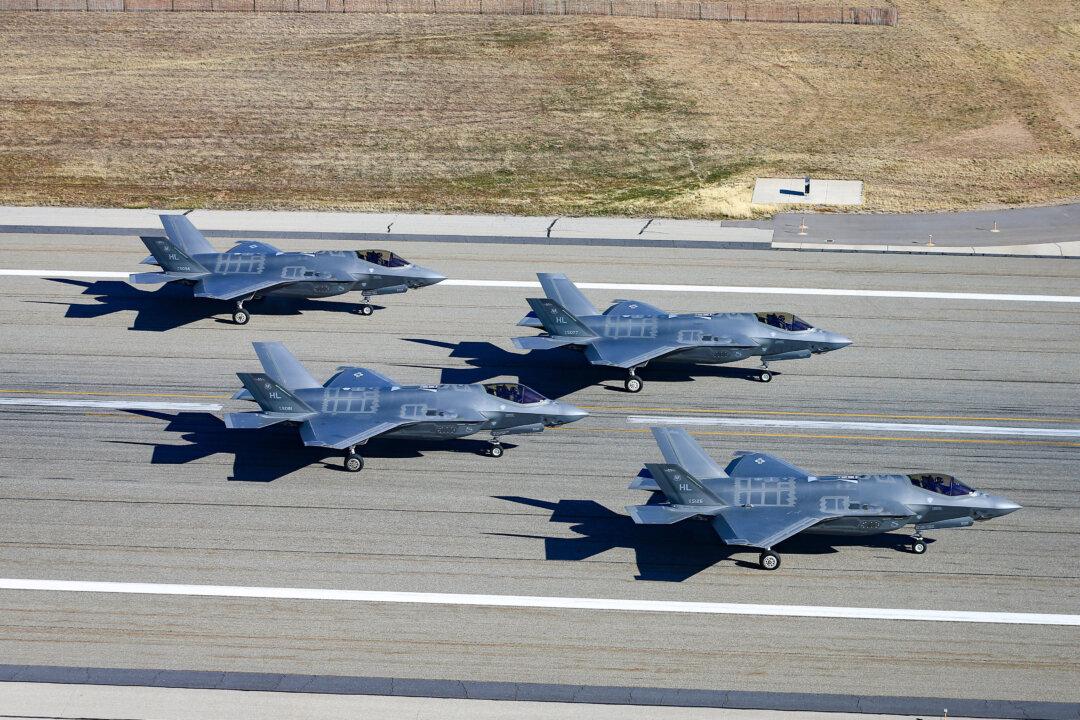Senior officials unveiled sweeping measures on Feb. 12 aimed at “reshaping, refocusing, and reoptimizing” the U.S. Air Force and Space Force as part of wider efforts to ensure the United States prevails in what they dubbed “an era of Great Power Competition.”
Approximately 24 key changes—a mix of near-term and longer-term initiatives—were announced.
They are grouped into four main categories: developing people, generating readiness, projecting power, and developing capabilities.
Senior leaders emphasized the need to start working on the changes as soon as possible and stressed that time is fast running out.
“We need these changes now; we are out of time to reoptimize our forces to meet the strategic challenges in a time of Great Power Competition,” Secretary of the Air Force Frank Kendall, who endorsed the new measures, said in a statement.
Under the key changes announced on Feb. 12, the Air Force will reintroduce warrant officers in IT and Cyber fields to “maintain technical leadership in these highly perishable skills.”
Space Force ‘Not Yet Optimized For Great Power Competition’
Other changes include changing operational air wings to units called “deployable combat” wings, “in-place combat” wings, or “combat generation” wings, each with its own structure and with a redesigned concept of support for agile combat employment, and developing mission-ready airmen with training focused on various skills needed for wartime operational mission readiness.The Air Force will also roll out large-scale exercises and mission-focused training encompassing “multiple operational plans to demonstrate and rehearse for complex, large-scale military operations” and elevate the Air Force Cyber Command to a stand-alone command.
According to the release, It will also strengthen support for nuclear forces by expanding the Nuclear Weapons Center to become the Air Force Nuclear Systems Center within the Air Force Materiel Command (AFMC).
“This will provide comprehensive materiel support to the nuclear enterprise; establish a 2-star general officer as the Program Executive Officer for Inter-Continental Ballistic Missiles,” officials said.
A new “Space Futures Command” will also be created and will develop concepts, conduct experimentation and wargames, and perform mission area design, among other changes.

Warnings Over China’s Growing Military Advancements
Gen. Saltzman noted the Space Force is battling with “substantial organizational, training, and equipping challenges” and said the newly unveiled measure will help improve readiness and better orient the Space Force toward “high-end fight.”The new measures were announced on the same day the Air Force released a report noting that the U.S. “faces a time of consequence marked by significant shifts in the strategic environment.”
The report highlighted growing domains such as space, cyber, and information warfare gaining prominence while noting a change in the global landscape, which is becoming increasingly more complex and dynamic.
Officials also noted “aggressive state actors and transnational threats,” including the People’s Republic of China’s (PRC’s) growing military advancements, which they said “threaten our intended mode of warfare and utilize assertive strategies to impose costs and deny U.S. power-projection capabilities.”
The report also highlighted additional threats from Russia and North Korea and resurging tensions in the Middle East in the wake of the Israel-Hamas conflict.
“Heightened risks of major conflicts; uncertain air, space, and cyber superiority; rapid technological change; employment of asymmetric means; and enduring fiscal pressure all underscore the need for urgent and focused enterprise-level efforts to address these challenges effectively. To remain ready, the United States Air Force must change,” the report stated.







